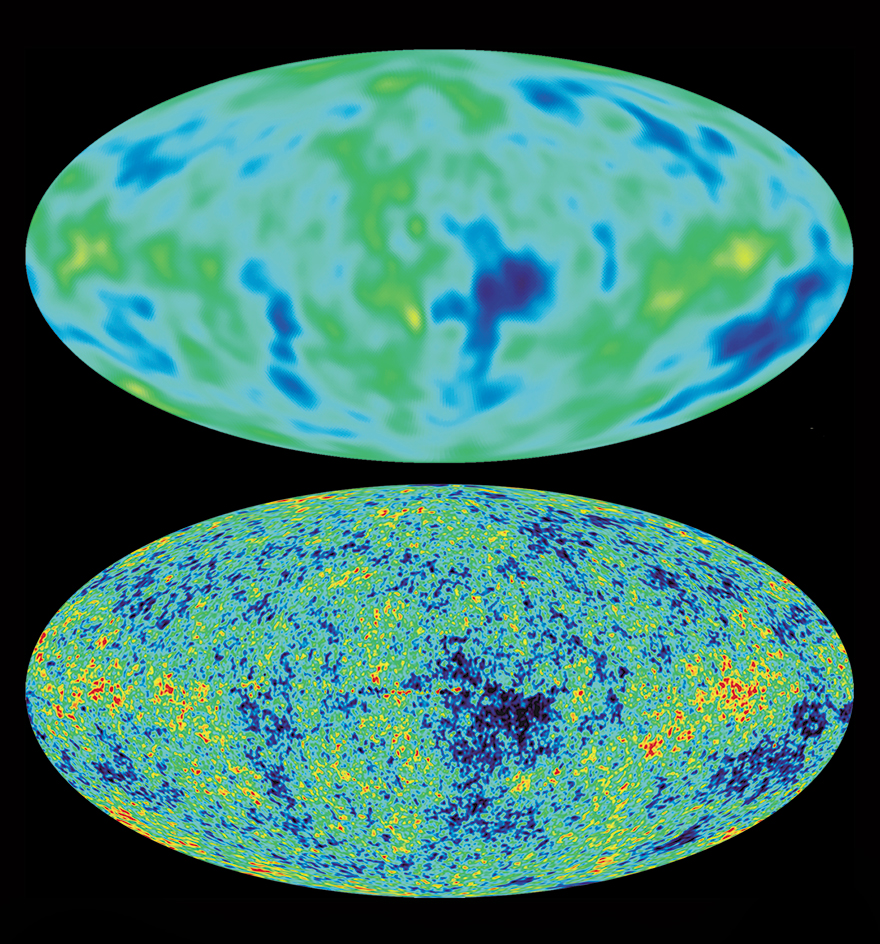Cosmic microwave background (CMB) radiation is energy left over from the early universe. This energy takes the form of electromagnetic waves called microwaves. The CMB radiation formed in the heat of the early universe and cooled as the universe expanded. Observations of the CMB radiation provide strong evidence for the big bang theory, which holds that the universe began expanding about 13.8 billion years ago in a cosmic explosion called the big bang.

The American physicists Arno Penzias and Robert W. Wilson discovered the CMB radiation in the 1960’s. Penzias and Wilson were attempting to use a satellite communications antenna to detect radiation from a halo of gas surrounding our galaxy. They worked to prevent the antenna from picking up noise (radiation from other sources) that could drown out the signals they were trying to observe. However, they could not eliminate noise in the form of microwaves that appeared to come from all directions. They consulted the American physicist Robert H. Dicke. Dicke and several colleagues were searching for evidence of radiation that formed soon after the big bang. They determined that the noise the antenna picked up was this radiation. Penzias and Wilson shared half of the 1978 Nobel Prize in physics for the discovery, which convinced most scientists that the big bang theory was correct.
The CMB radiation originated more than 13.7 billion years ago, when the universe was only about 380,000 years old. Scientists study the radiation to learn about the universe at that time. For example, the CMB radiation has nearly the same temperature in all directions. Accordingly, matter must have spread quite evenly throughout the early universe. The apparent “smoothness” of the early universe once puzzled scientists because the universe now has a clumpy structure, with concentrations of galaxies separated by vast regions of empty space.
In 1992, scientists announced that a satellite called the Cosmic Background Explorer (COBE) had found slight temperature variations in the CMB radiation from different directions. In 2002, they reported that another satellite, the Wilkinson Microwave Anisotropy Probe (WMAP), had mapped these variations in great detail. Scientists think the variations show that matter began to clump in the early universe. Over billions of years, the clumps grew into the galaxies that are observed today. In 2010, scientists released WMAP’s “seven-year data set” showing variations in the polarization of the CMB radiation in great detail. A wave’s polarization is the direction in which it vibrates. The data supported certain models of inflation theory, the idea that the early universe expanded at an accelerated rate. The data also refined the estimate of the age of the universe and produced the first observation of helium being produced in the big bang along with hydrogen.
Launched in 2009, the Planck spacecraft studied the CMB in greater detail than did any previous instrument. Scientists revealed results of the craft’s two-year study in 2013. The new data places the age of the universe at 13.82 billion years, several hundred million years older than in previous estimates. The craft also observed the universe to be expanding at a sightly slower rate than in previous findings. Planck data also shows the universe to be slightly lopsided, with a greater concentration of matter in one direction.
Loading the player...Wilkinson Microwave Anisotropy Probe (WMAP)
